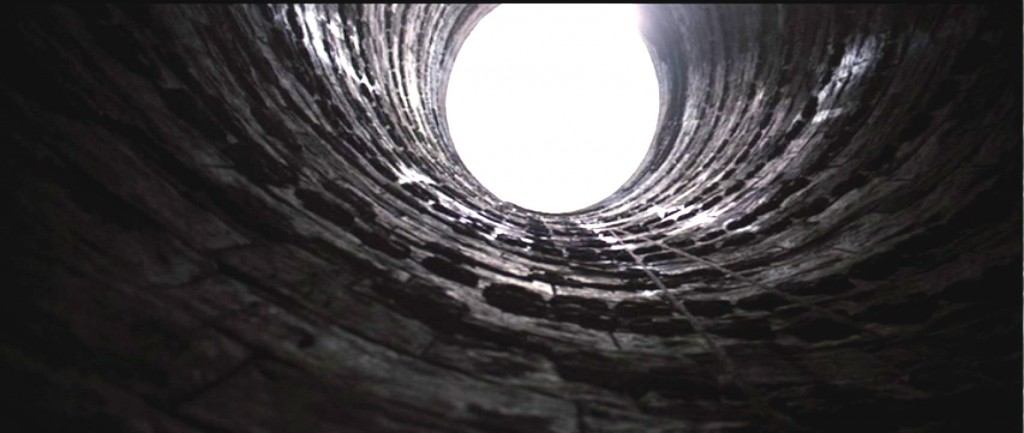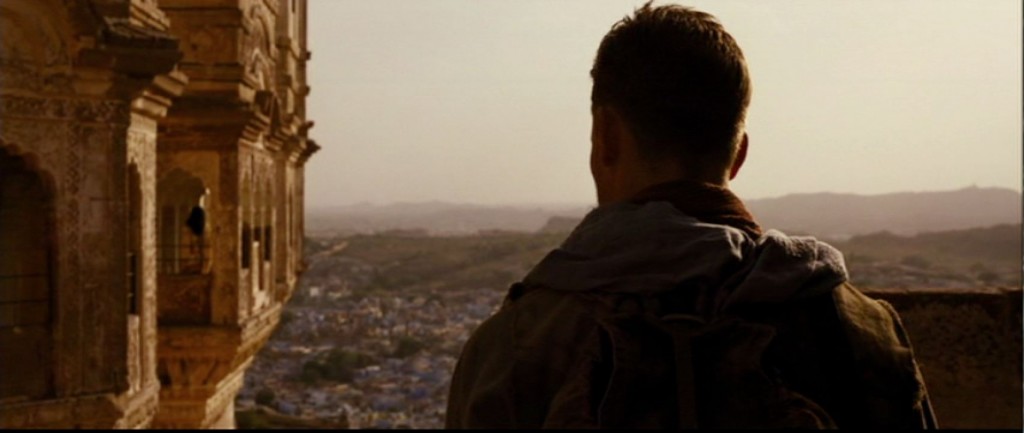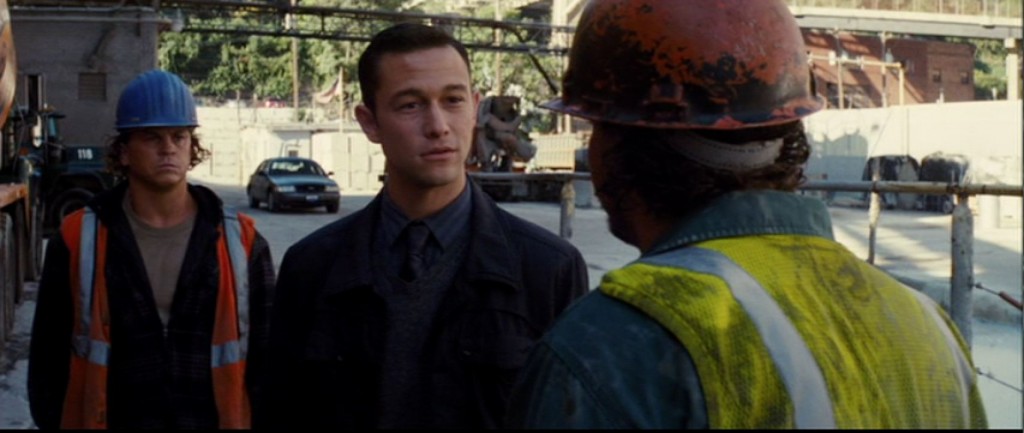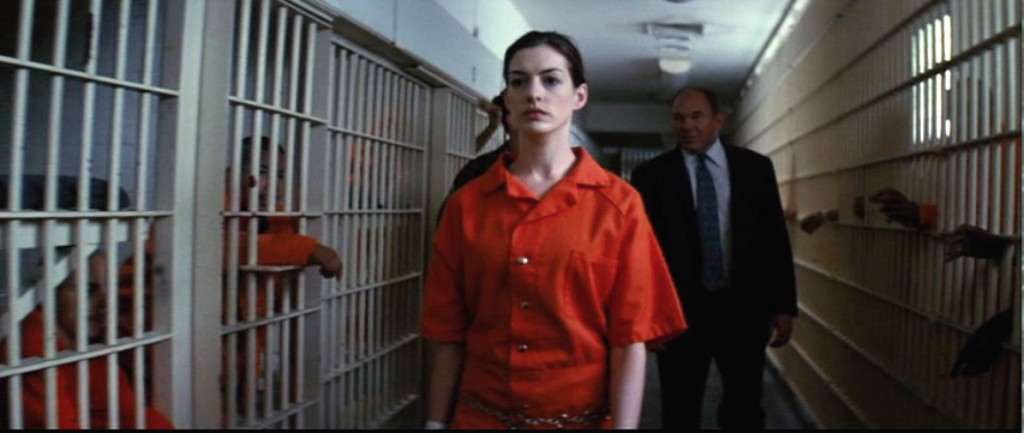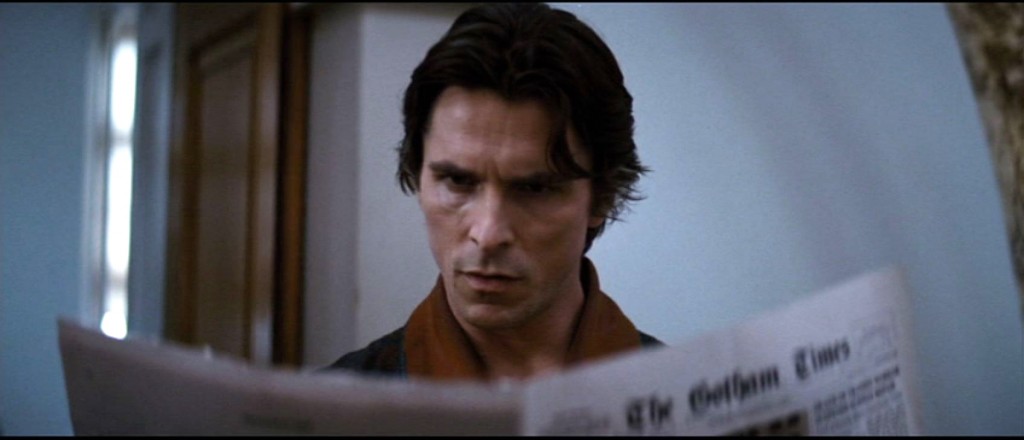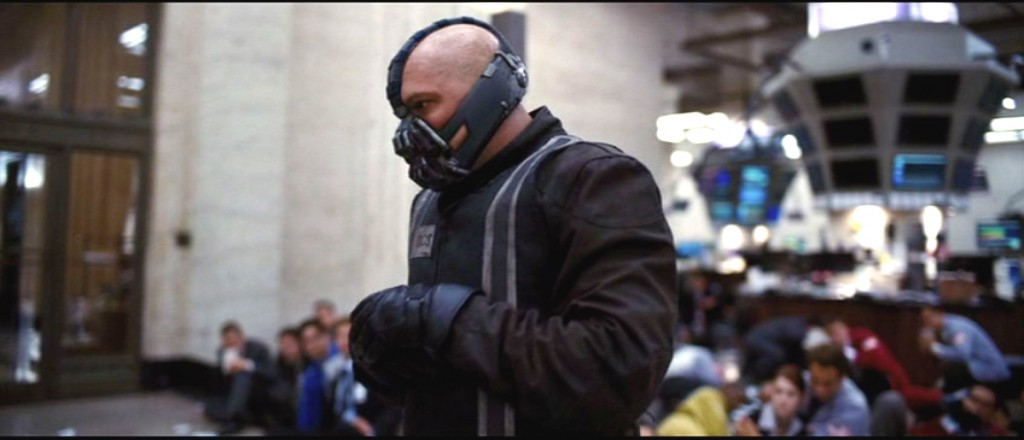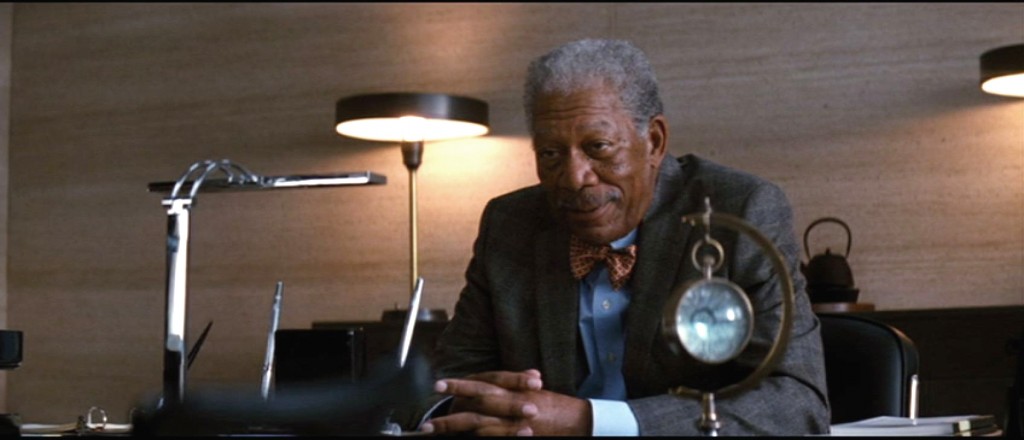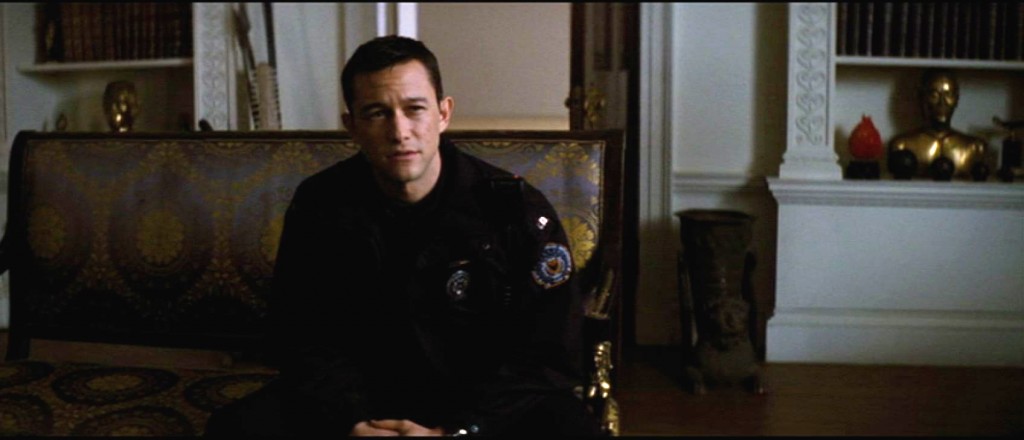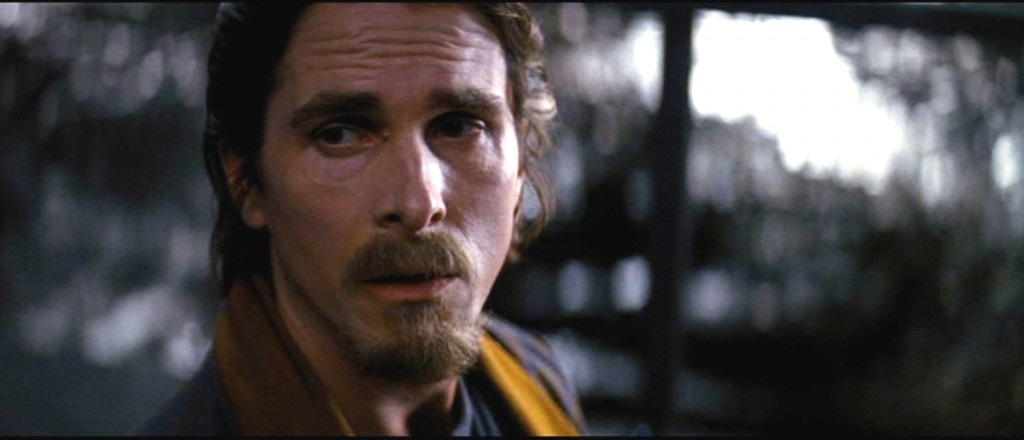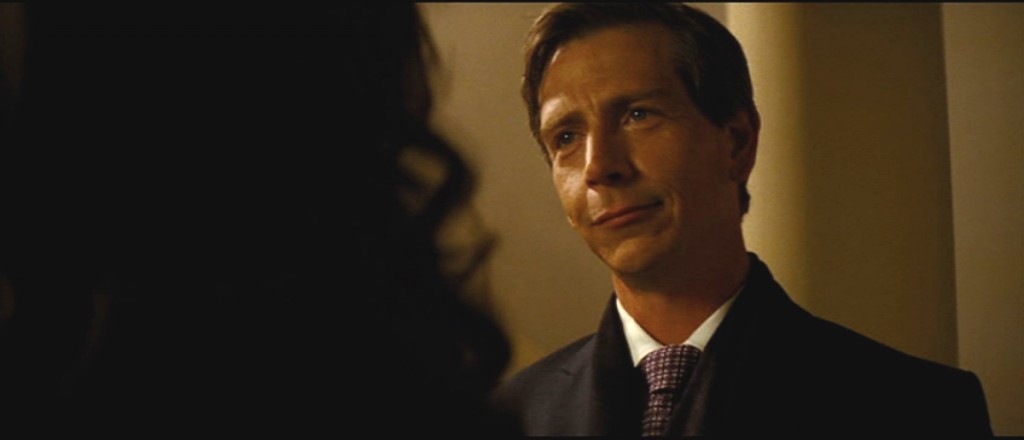Batman: The Dark Knight Rises part 12
Bruce is no longer broken but he is still in the pit. “Prisoner,” the only English-speaking guy in the place, warns him against escape, although everyone else in the pit seems really excited about it, they become a positive choir of helpful animals as he climbs the wall. (I still don’t know why he doesn’t pull the rope up after himself, tie a hook to it and use it as a grapple — where is Batman when you need him?) (However, major props to Bruce for taking a major fall with a rope tied around his waist after suffering a broken back.)
When pressed, Prisoner reveals an ooch more about the love-child of the mercenary and the warlord’s daughter — the child, he says, was “no ordinary child, a child born in Hell.” Bruce, he says, is not qualified to escape from the pit, he is a child of privilege, born in the light. Prisoner does not know, perhaps, that falling down a hole is old news to Bruce, although, to be fair, he was rescued from that original hole by his wealthy father. (I’m a little more concerned that Bane claims to have been “born in darkness,” since, as the reader must know by now, Bane is not the child of the pit. Was he, too, born in the pit?)
Batman: The Dark Knight Rises part 11
While Bane’s army pillages Gotham City, Broken Bruce Wayne, in the pit on the other side of the world, is given some rough-hewn physical therapy and told the legend of the child born in the pit. Actually he is told two stories, one about the mercenary who falls in love with the warlord’s daughter, and another about the child of that union, the warlord’s daughter’s child, which is the child born in the pit. We have been told earlier that Bane was born in the pit, and so we latch on to that factoid, because Bane is super-weird, with his accent and his mask and his rage, so we want to know who that guy is. The Dark Knight honored tradition by keeping the identity of the Joker a complete mystery, but Rises is happy to give us a background for its bad guy — even though, we will find out, not the bad guy we’re thinking about.
So Bane, the story will have us believe, is the product of the union of a mercenary and a princess — true love, no doubt, true love punished by a cruel father in a harsh, fairy-tale land with an open-pit prison. A mercenary, by definition, has no dog in a fight, owes no one allegience, but Bane has been perfectly clear about his allegience to Ra’s Al Ghul, a man he thinks of as his spiritual father.
Batman: The Dark Knight Rises part 10
John Blake, new detective, Daytime Batman, is trying to solve the murder of John Daggett. To solve the murder of John Daggett, he’s chasing down leads in construction jobs because of a number of odd construction permits Daggett applied for before his death. If I’m not mistaken, this is not only the most mundane piece of detective work done in The Dark Knight Rises, it is the only detective work done. All of Batman’s detective work in the narrative consists of “getting told things by people.” The Dark Knight had him create his own high-tech ballistic range in his basement so that could find a fingerprint on a shattered bullet, but Rises has him not even bothering to check the background of Miranda Tate before handing over control of his company to her.
Blake asks a couple of construction workers about their work with Daggett, and recognizes one from the stock-exchange heist. A scuffle ensues, leading to Blake accidentally shooting his suspect to death. Blake is greatly upset by this shooting death, but it doesn’t prevent him from first interrogating his suspect in prime Batman style, grabbing the man by the lapels and screaming in his face. So already Blake has taken a step towards Batman-hood, he’s traumatized by a shooting death (except this time he’s the shooter, and not a mugger but a detective) and he’s a brutal interrogator. He also learns that a huge bomb has been constructed, too late to stop the entire police force from stepping into a trap.
Batman: The Dark Knight Rises part 9
Act IV of The Dark Knight Rises begins by checking in with Selina, who is being held at Blackgate Prison for kidnapping the congressman back in Act I. The screenplay takes care to note that Selina, despite her seeming vulnerability amidst a population of convicted criminals, can take care of herself in the worst of circumstances. The script presents this as a physical gag, but it’s important to keep in mind that Selina, as an anti-Batman (and anti-Bruce) (they’re both in prisons at this point), is still at her physical peak compared to Bruce. Bruce is in prison at Bane’s hand, but Selina is in hers by her own hand. One could ask if either character “deserves” his or her imprisonment, and do well to do so, it’s kind of the question of the moment as the narrative moves forward. “Deserves” is that most moveable of moral ends, especially in regards to crime and punishment, and it exists always in relation to its society. Does Bruce “deserve” to lie, broken, in a foreign prison while Bane plots to destroy his own city with the fruits of his own wealth? How many men lie in Blackgate on this day as a result of Bruce’s actions, and how many of them consider themselves innocent or misunderstood? Does Selina “deserve” to be in prison, when she has hurt no one who couldn’t afford it, and only wants to get by in a society that won’t let her forget her past? (Fantine! Although Selina has it much better than Fantine, she doesn’t have to cut her hair, pull her teeth or die of tuberculosis, and she’s developed keen fighting skills to deal with the men who might brutalize her.) “The Dent Act” is mentioned as covering a woman placed in Blackgate (why Selina is in a prison instead of a jail, when she has been convicted of nothing, is another question), and we are meant to understand that the Dent Act has been perhaps overreaching in its efforts to clean up Gotham, which raises all kinds of uncomfortable questions of the authority we grant to the police (and the army) to deal with the people we don’t want to deal with. The Thin Blue Line, we remember, exists primarily to keep property in the hands that have it. Possession is nine-tenths of the law, the police are attack dogs of the possessors. (Funny how the wealthiest wish to avoid paying taxes to the government that keeps their wealth safe and growing.)
Batman: The Dark Knight Rises part 7
Lucius Fox comes to Bruce’s now-Alfredless house to deliver the bad news: Bane’s hit on the stock exchange, where he used Bruce’s Selina-stolen thumbprint to approve some very bad stock buys, has left Bruce broke. (Comics readers know that Bane, historically, “broke” Batman physically — his punishment for Bruce Wayne is more fitting. You break Batman physically, you break a billionaire financially.) (Note that “billionaire playboy” is no longer Bruce’s job description, but rather “billionaire recluse.”) Broke Bruce means that John Daggett can now take over Wayne Enterprises, which means that he has control over the “save the world” project, unless Bruce can put seeming good-guy Miranda Tate in charge of the company.
Batman: The Dark Knight Rises part 6
One bright day, Bane and his minions take over the Gotham City Stock Exchange. Let’s break this down.
Batman: The Dark Knight Rises part 5
The next step on Bruce Wayne’s road to recovery is stopping in to see Lucius Fox, the inventor to whom Bruce entrusted the running of his company back in Begins. Lucius finally brings Bruce’s monetary woes into focus — he spent his entire research-and-development budget on this mysterious “save-the-world” project, then cancelled it, leaving Wayne Enterprises ripe for takeover by industrial predator Daggett. (If Harvey Dent was Daytime Batman, John Daggett is Overground Bane, taking over Bruce’s legitimate business while Bane prepares to go after his darker identity.) Note that the screenplay still doesn’t tell us what the project is, exactly. Because what the project is is the maguffin of the piece, and if we know what it is too soon, it tips the narrative’s hand in undesired ways. Suffice to say that the comely Miranda Tate was instrumental in developing said project, and that Lucius strongly supports Bruce settling down with her. And, when Lucius is played by no less a personage than Morgan Freeman, the viewer takes it on faith that if Lucius wants you to settle down with a particular woman, you should probably do that.
Batman: The Dark Knight Rises part 4
With Jim Gordon hospitalized, John Blake emerges as a significant secondary protagonist in The Dark Knight Rises a kind of “young Gordon.” What does Blake want? Blake wants Bruce Wayne to stop sitting around feeling sorry for himself and become Batman again.
Now then. Some have expressed discomfort with the idea that John Blake, Rookie Cop, knows that Bruce Wayne is Batman while neither Jim Gordon nor any other citizen of Gotham City has apparently even given the matter a moment’s thought. This, for me, goes hand in hand with other narrative contrivances that occasionally poke through the cloth of Nolan’s Batman trilogy. The presentation and production design of these movies is so grounded, so realistic, it’s easy to forget Batman’s pulp roots, nay his operatic roots, and moments like “Blake knows Bruce Wayne is Batman,” in my experience, are endemic to the genre. I’ll say it again, the moment you decide to make a movie about a man who dresses up like a bat to fight crime, you enter the realm of the fantastic. The reader may remember my analysis of Batman and Robin, where I discovered that the psychedelic outrages of that screenplay all stem from the choice of making the flamboyantly fantastical character Mr. Freeze the chief antagonist of the piece — once that decision was made, everything else had to be made that much more crazy to fit that character. A similar thing happens here: as much as director Nolan wants to ground his Batman movies, the fact remains that they are about a man who dresses up as a bat to fight crime. Thousands of creative and narrative choices flow from that single plot point. Since that single plot point is flat-out absurd, it greatly affects everything that flows from it. In this case, wait, why hasn’t anyone, anywhere, even tried to figure out who Batman is? If a movie tried to address that question in any realistic way we’d be here all day, and the narrative would quickly spiral out of control as the thousands of questions raised by a man dressing up as a bat to fight crime would echo down and down and down until the very thing we get out of a Batman story — that is, the metaphor — would be lost. That’s why narratives like The Dark Knight Rises needs occasional contrivances like “Rookie Cop Figures Out Bruce Wayne is Batman” (or “SEC Approves Trades Made By Terrorists at Stock Exchange”). Anyone whose disbelief crashes down at this juncture would fall down dead if the same everyday logic was pressed onto any other aspect of the narrative.
Batman: The Dark Knight Rises part 3
The time has come to ask: What does Bruce Wayne want?
We’ve seen that he’s eradicated organized crime in Gotham City, so theoretically he’s overcome the sense of helplessness he felt about his parents’ deaths — there will be no more Joe Chills running around making orphans out of billionaires’ sons. Now, it would seem, he’s looking for a way out, a way to move on, to finally emerge from his cave, bury his parents and his girlfriend (and her boyfriend Harvey Dent) and become a fully-integrated man. The Dark Knight Rises is, at its heart, a dramatization of how a world-class control freak finds a way to let go.
But “to let go,” that’s not what he wants, that’s what he needs. What he wants is the opposite: to close the world off, to brood, to pout, essentially, to consider his losses and to hell with the world.
Batman: The Dark Knight Rises part 2
We’re still at the Dent-related function at Wayne Manor, and there are still characters scurrying around to meet. John Daggett is some level of businessman, disliked by Alfred and apparently by Miranda Tate as well, a dissolute lout who opines that Bruce Wayne pounced off with his investors’ money with his “save the world” project, and offers to get Miranda her money back in his own way. Miranda, it seems, shares Bruce’s ideals and snubs Daggett. In keeping with the theme of deception, Daggett thinks Bruce has deceived his investors and Miranda thinks Daggett is deceiving her. Later, we will find that Miranda was deceiving everybody.
